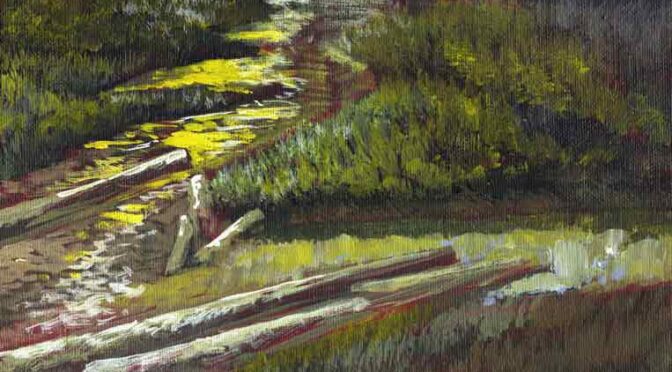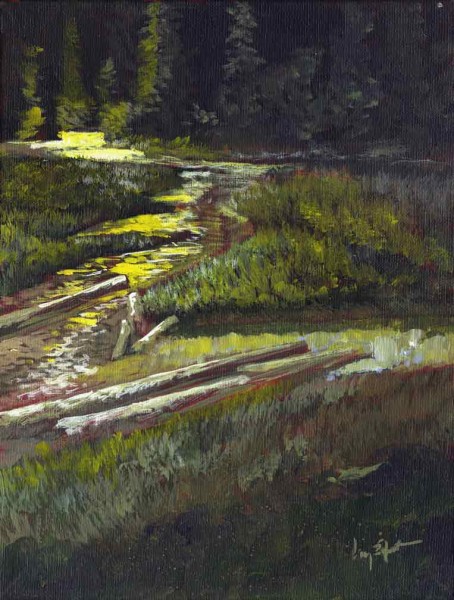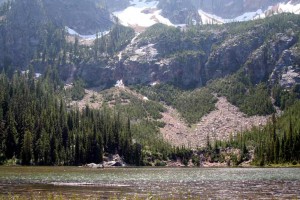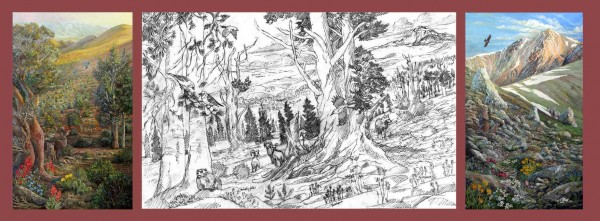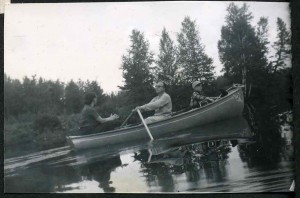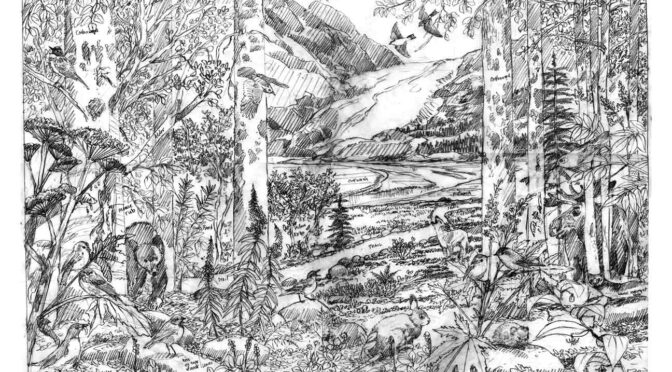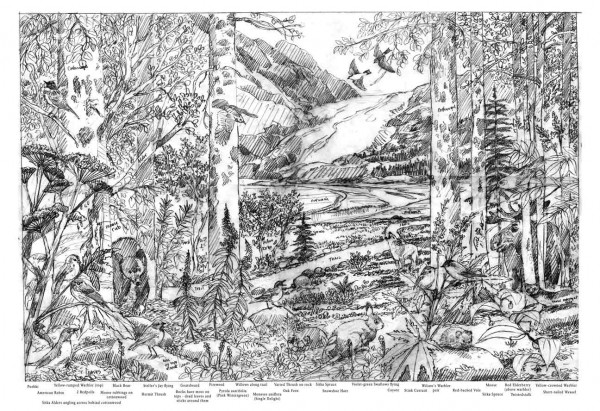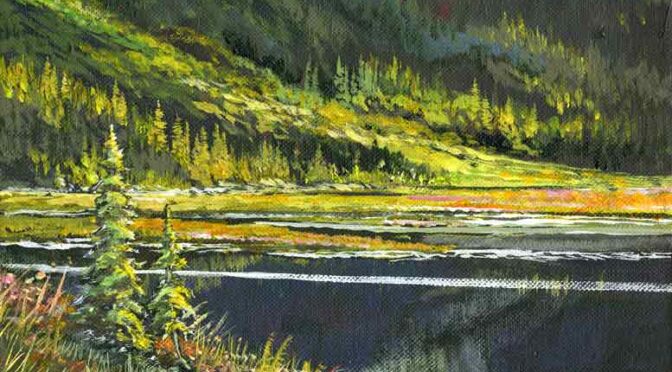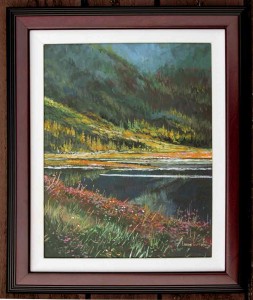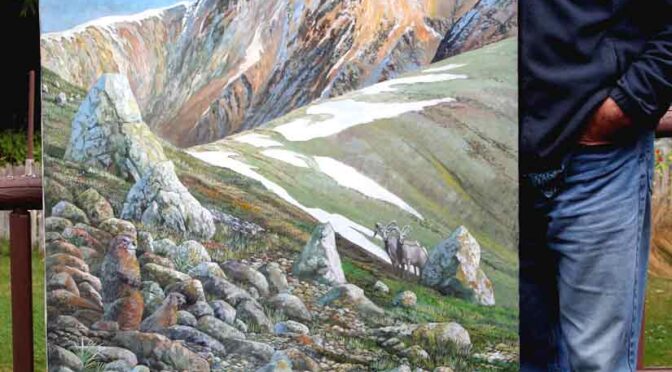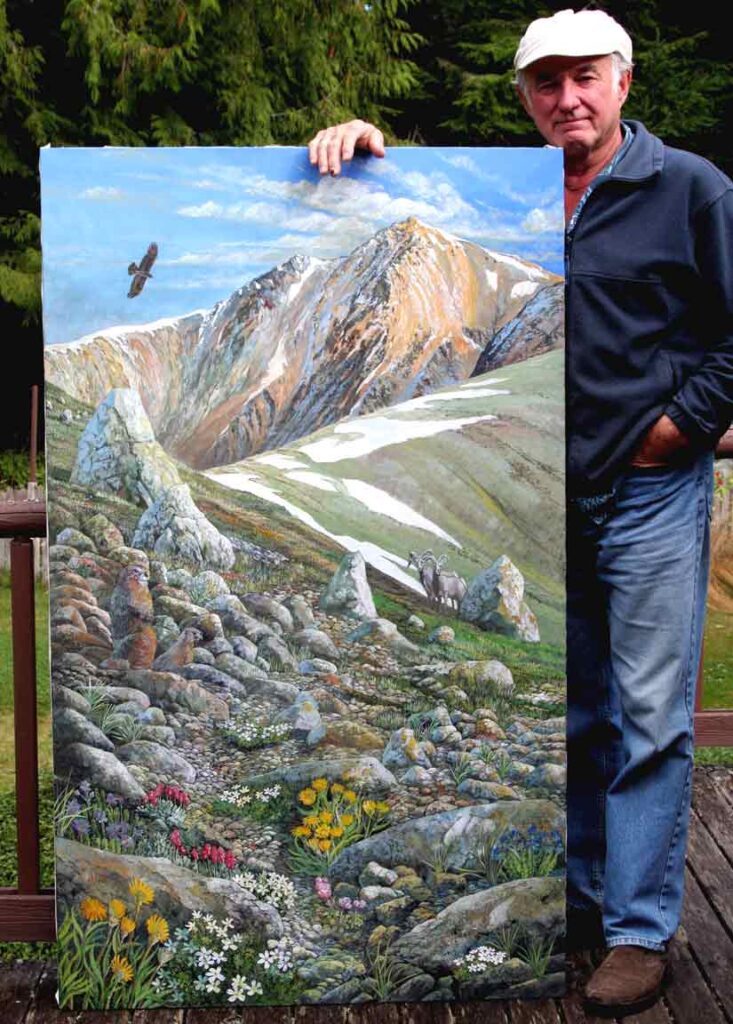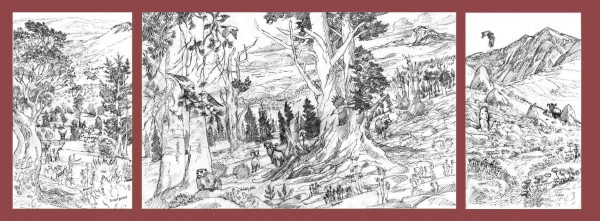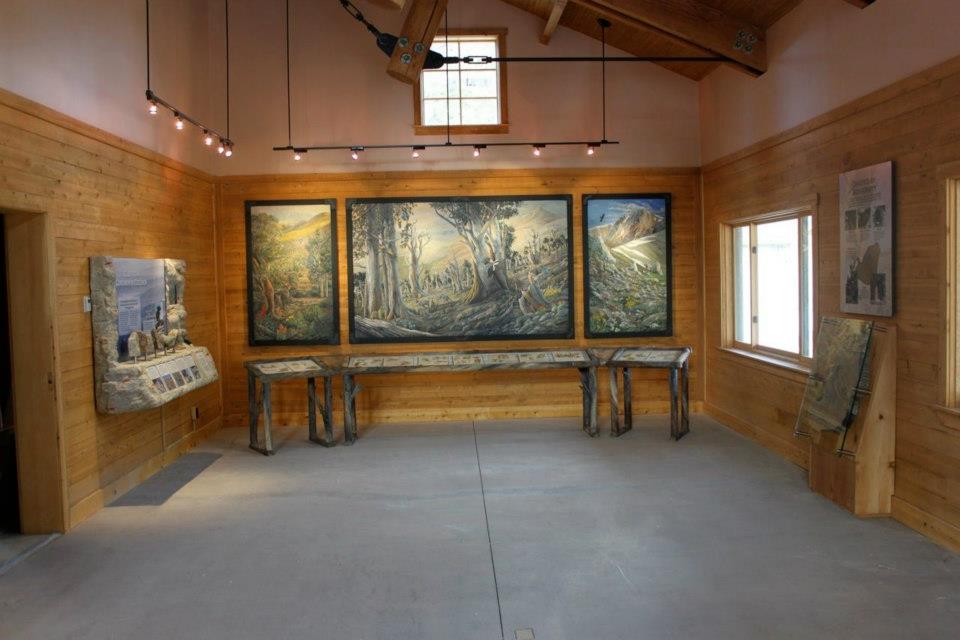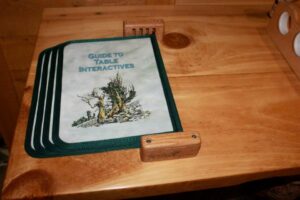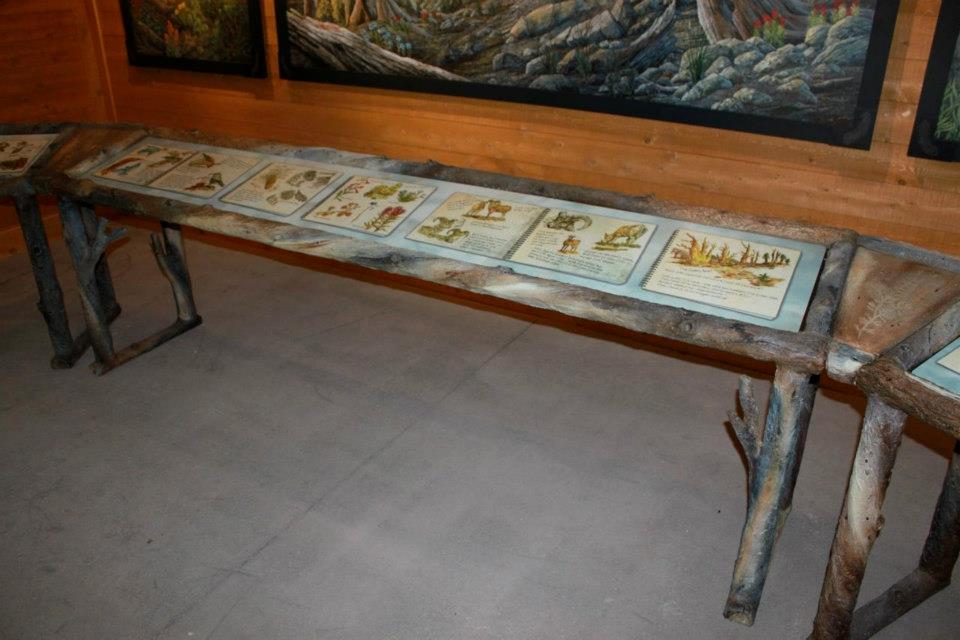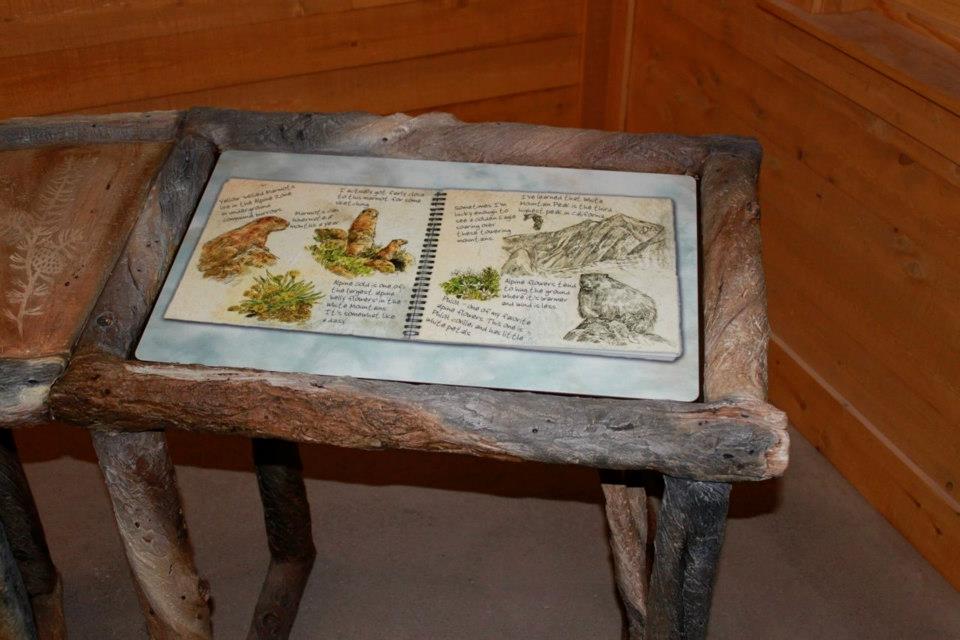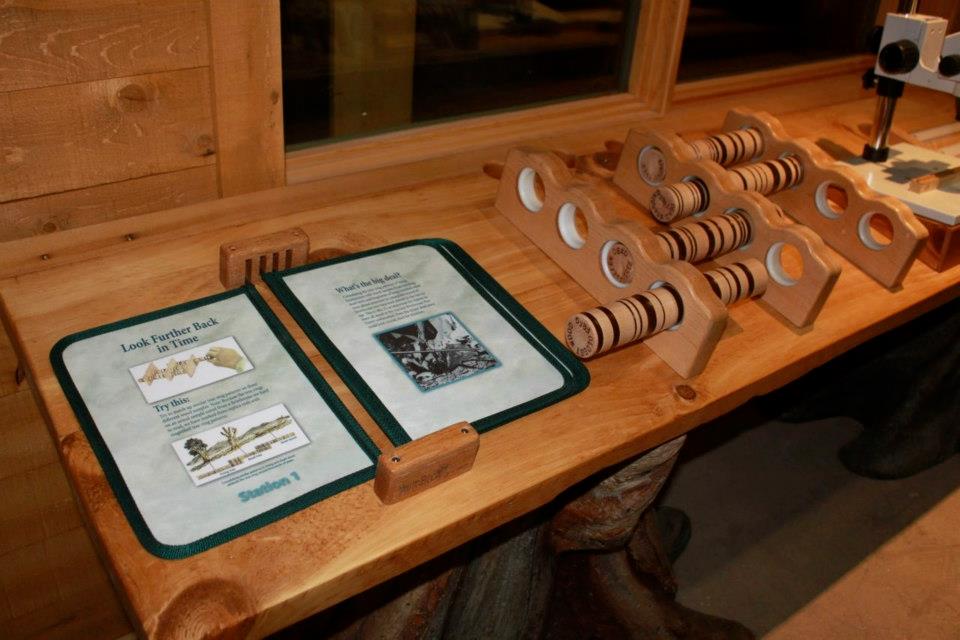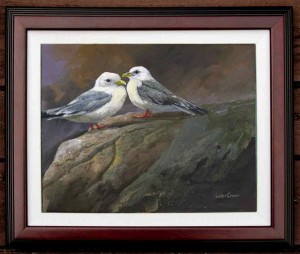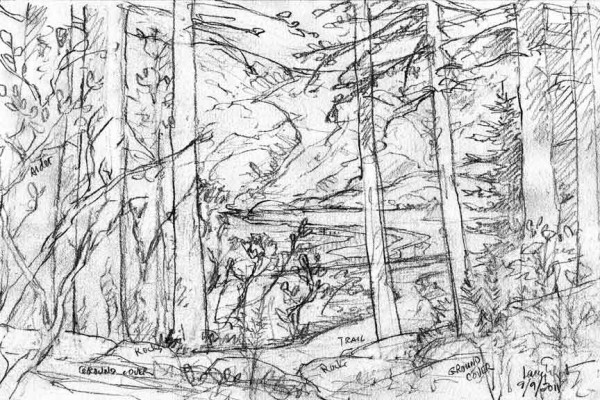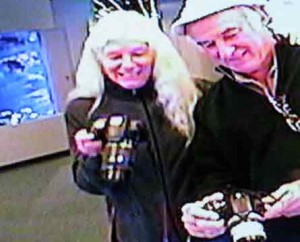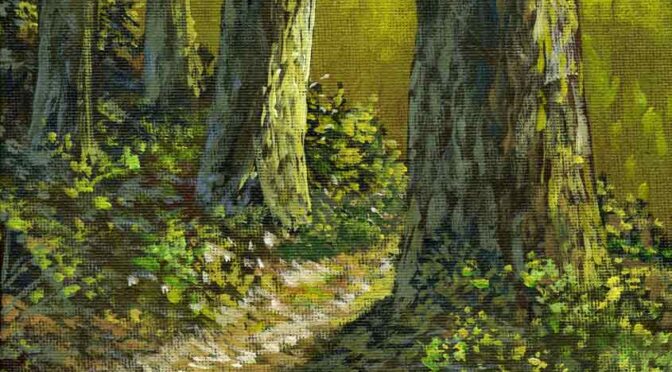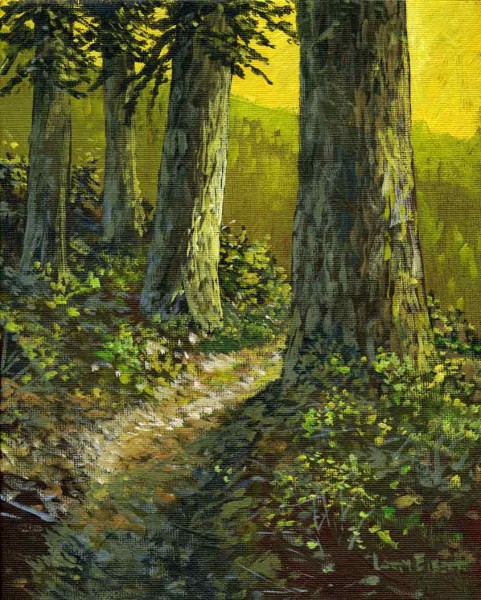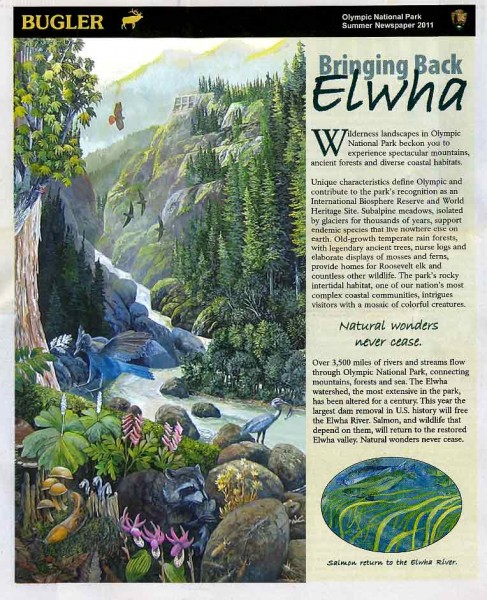This painting and about 20 others are destined for a November show I’m having at Gallery Nine in Port Townsend. If sold here on the blog, I hope I can still hang it there for a week or so. While only about 5% of my mailing list is from Port Townsend, I’ll be hanging the show on Monday if you’d like a pre-show preview before Saturday Gallery Walk.
Cutthroat Lake is on the east side of the North Cascades, but just barely. Where the snowmelt runs out of the lake, it braids itself through some very pretty mosquito-filled meadows, then comes together to plunge down into Early Winters Creek towards the Methow Valley in eastern Washington. We were there a few months ago and I was interested in the way the light was streaming through the trees and onto the creek. It made for a very interesting and complex set of light patterns around the jumble of islands, downed trees and moving water. From this location, we turned around and walked a few hundred feet, and this was the spectacular scene that awaited us. (Clicking on both these images will enlarge them.)
This ORIGINAL painting is varnished acrylic on linen canvas, 11″ x 14″ and $140 unframed.
The custom wood frame makes it a total of $165 and shipping adds just a bit more depending on your zone or if you take the frame. This is the original painting, NOT a print.
Email us here for details or just hit reply.
Thanks for reading this week.
Larry Eifert
Click here to go to the online blog this was to.
Click here to go to our main website – packed with jigsaw puzzles, prints, interpretive portfolios and lots of other stuff.
Click here to check out what Nancy’s currently working on with her photography.
